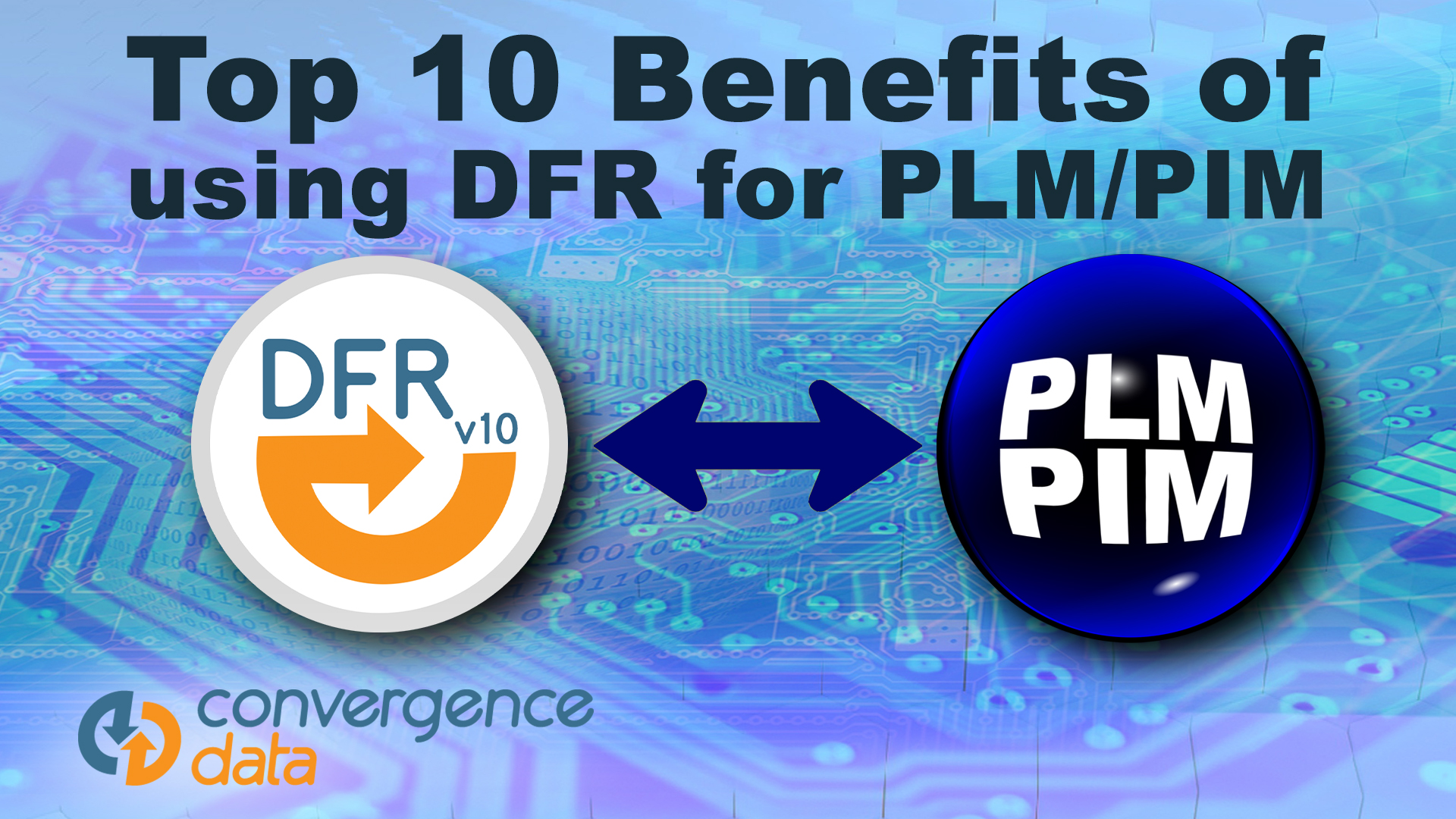
TOP 10 BENEFITS OF USING DFR FOR PLM/PIM
Convergence Data is a Software as a Service (SAAS) company. This means that we use our software every day along with our customers. Doing so keeps us on top of the refinements and enhancements we need to make to make DFR the best classification software it can be. We have mitigated the challenges other systems like PIM and PLM can have with managing this information.
We have summarized what we think are the top 10 areas in which we provide the maximum benefit in a classification project for your PIM or PLM system deployment.
- Classification structure can be imported from different sources – PLM, excel then fine-tuned to global standards while adhering to best practices in DFR.
- Classification changes are simplified with DFR’s multi-select capabilities – copy and paste multiple categories at once or prune and graft to move parts and categories all in one operation.
- Convergence provides best practices in classification category development to ensure your structure is optimal for your business mitigating common mistakes based on our 20 years experience.
- Classification projects are highly collaborative and may involve a lot of people working on the structure and classify parts – DFR’s workflow and task tracking process let you know where you are each step of the journey.
- Bulk data cleansing tools allow users to update values in seconds to adhere to approved lists, description templates, and approved units of measure.
- DFR allows any data to be loaded – even if it’s not correct – then points out the errors and makes it easy to fix. It’s very forgiving and makes fixing errors easy.
- DFR’s Validation tools allow a user to select the error type to check or check all errors and run on an entire category – exposes errors and what needs to be fixed for every item.
- Data Exporting – DFR Policy manager, contains all the rules needed to validate exports to insure publishing to other systems is as efficient as possible. DFR export tool supports exporting item data, classification structure, lists of values, in different formats – CSV, Excel, XML and custom formats.
- DFR includes analytical tools used to spot trends in the data – e.g. what part characteristics are driving part proliferation for a category; its clustering capabilities can expose duplicate and near-duplicate parts for rationalization. DFR integrates supplier pricing to expose real cost-saving opportunities.
- Role-based security ensures that only the right person can make changes to structure or data or approve and/or reject changes.

Source: convergencedata

Don’t hesitate to contact Thanh for advice on automation solutions for CAD / CAM / CAE / PLM / ERP / IT systems exclusively for SMEs.
Luu Phan Thanh (Tyler) Solutions Consultant at PLM Ecosystem Mobile +84 976 099 099
Web www.plmes.io Email tyler.luu@plmes.io
